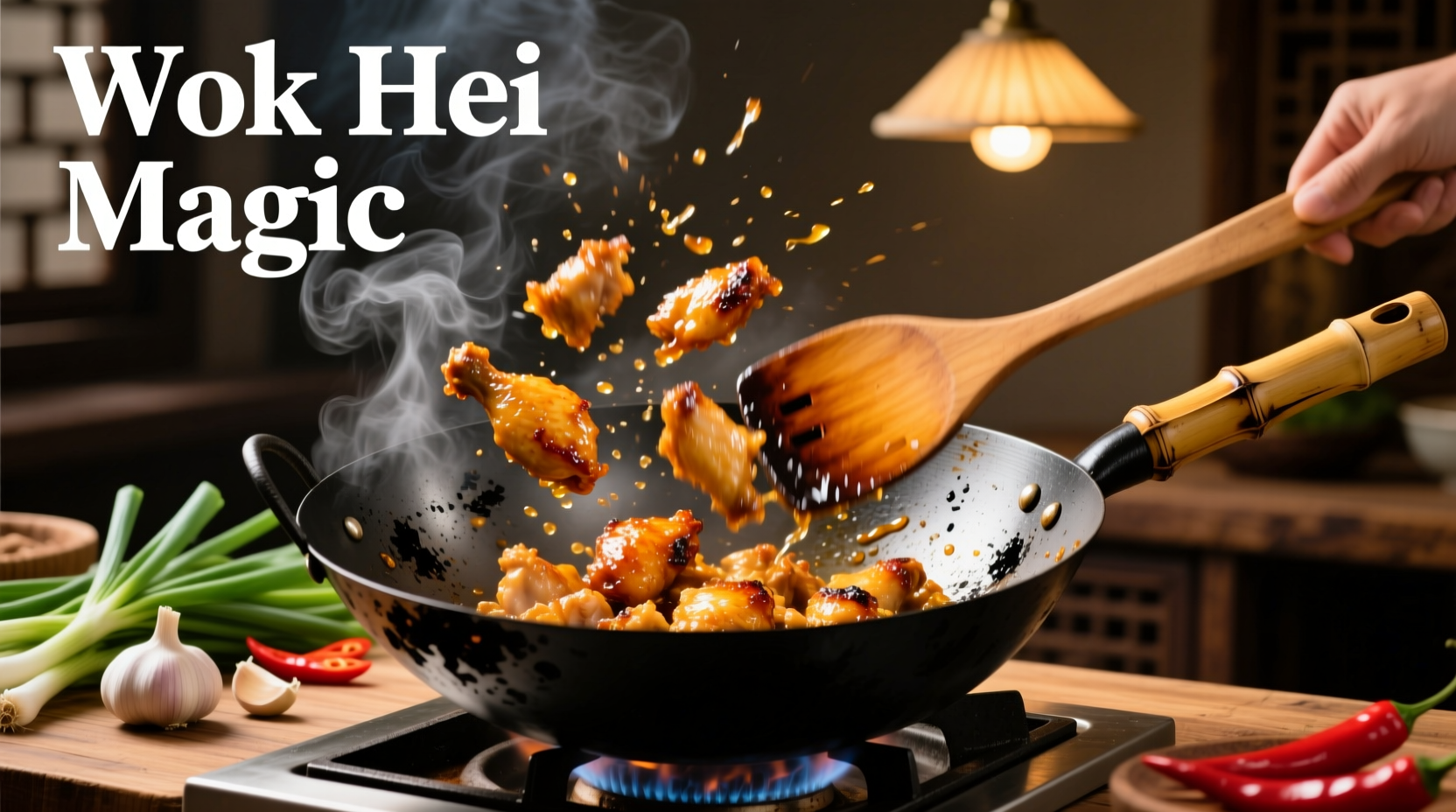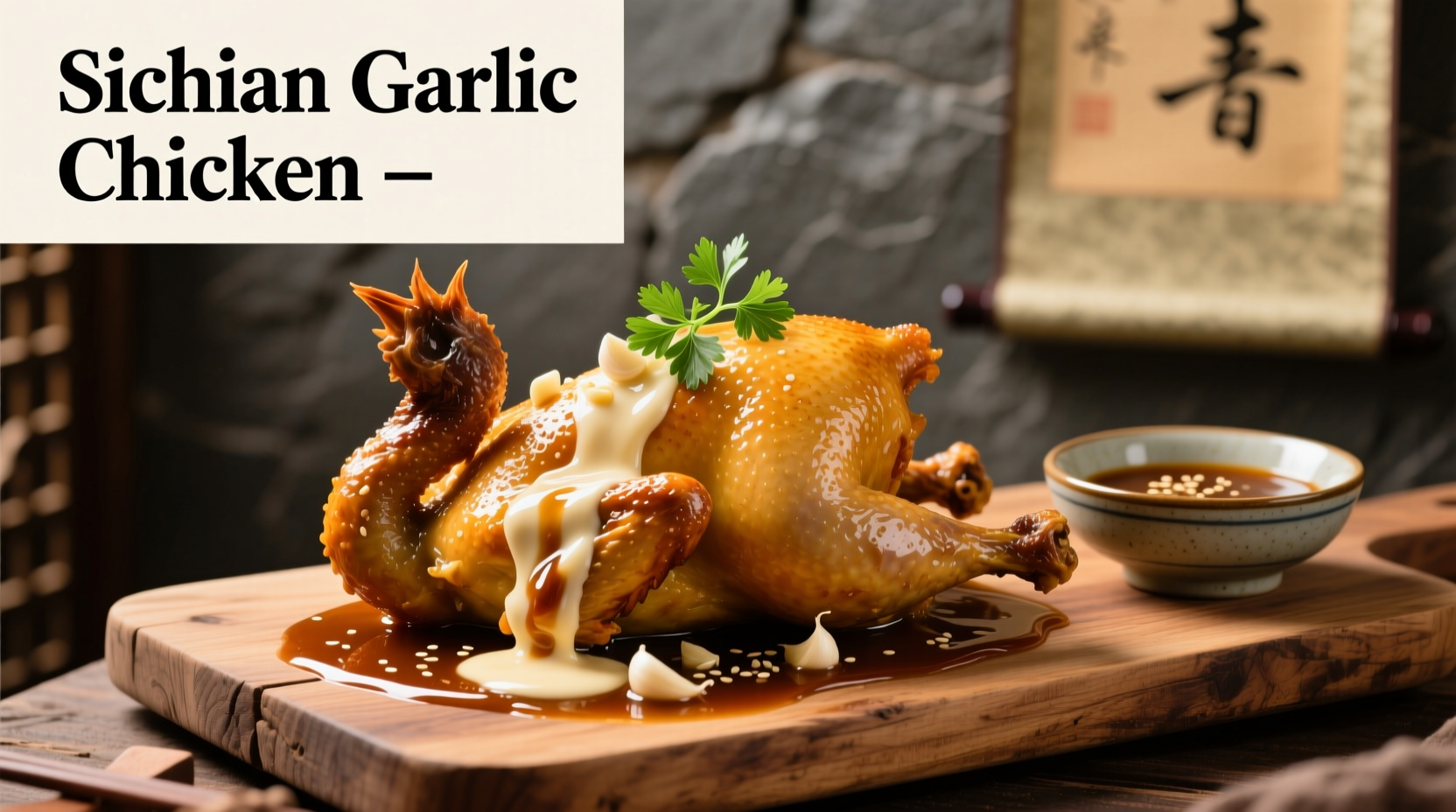Authentic Chinese chicken with garlic sauce features tender chicken stir-fried in a savory, aromatic sauce made from fresh garlic, soy sauce, Shaoxing wine, and a touch of sugar—not the thick, sweet version commonly found in Westernized Chinese restaurants. This traditional preparation balances umami, saltiness, and subtle sweetness while highlighting garlic's natural flavor without overwhelming heat.
The True Essence of Chinese Garlic Chicken
When you search for "chicken and garlic sauce Chinese," you're likely imagining that popular takeout dish with glossy, golden-brown chicken swimming in a rich, garlicky sauce. But authentic Chinese garlic chicken differs significantly from its Americanized counterpart. Traditional Chinese garlic chicken (suan xiang ji) originates from coastal Fujian province, where chefs perfected this simple yet sophisticated preparation highlighting fresh ingredients rather than heavy sauces.
Unlike the thick, cornstarch-heavy version served in many Western Chinese restaurants, authentic preparation uses minimal thickener, allowing the natural flavors to shine through. The sauce should coat the chicken lightly rather than smother it, with garlic providing aromatic depth rather than pungent heat.
| Authentic Chinese Version | Americanized Restaurant Version |
|---|---|
| Light soy sauce base | Heavy cornstarch-thickened sauce |
| Fresh garlic, lightly cooked | Strong garlic flavor, often from powder |
| Subtle sweetness (1-2 tsp sugar) | Pronounced sweetness (3-4 tbsp sugar) |
| Wok hei (breath of the wok) char | Deep-fried, greasy texture |
| Minimal sauce coating | Heavy sauce coverage |
How Chinese Garlic Chicken Evolved Across Borders
The journey of garlic chicken from Chinese home kitchens to global menus reveals fascinating culinary adaptation. Originally a Fujianese home-cooked dish dating back to the Ming Dynasty, it transformed significantly when Chinese immigrants adapted their cooking to available ingredients in America during the late 19th century.
1368-1644 (Ming Dynasty): Garlic chicken appears in coastal Fujian province as a simple stir-fry using locally available ingredients.
1850s: Chinese immigrants bring regional cooking techniques to America during the Gold Rush era.
Early 1900s: Americanized Chinese restaurants begin modifying dishes to suit local palates, adding more sugar and thickener.
1970s: Garlic chicken becomes a staple on American Chinese restaurant menus with significant recipe alterations.
2000s-Present: Growing interest in authentic Chinese cuisine leads to renewed appreciation for traditional preparation methods.
Essential Ingredients for Authentic Flavor
The magic of genuine Chinese garlic chicken lies in ingredient quality and proper technique. Unlike Western versions that rely on heavy sauces, authentic preparation depends on the quality of just a few key components:
- Fresh garlic: 8-10 cloves, minced (not crushed) for optimal flavor release without bitterness
- Light soy sauce: Provides saltiness without overpowering (avoid dark soy for this dish)
- Shaoxing wine: Essential for depth of flavor (substitute dry sherry if unavailable)
- Chicken: Boneless thigh meat preferred for tenderness and flavor retention
- Sesame oil: Just 1/2 teaspoon added at the end for aroma

Mastering the Cooking Technique
Authentic Chinese garlic chicken requires precise timing and temperature control. The key to success lies in proper wok technique, which creates that distinctive wok hei (breath of the wok) that defines great Chinese stir-fries.
Marinating the Chicken
Begin by marinating 1.5 lbs of chicken thigh meat (cut into 1-inch pieces) with:
- 1 tablespoon Shaoxing wine
- 1 teaspoon light soy sauce
- 1/2 teaspoon cornstarch
- 1/4 teaspoon baking soda (for tenderness)
- 1 teaspoon water
Let this rest for 20 minutes—no longer, as the baking soda can make the chicken mushy.
The Critical Stir-Fry Process
Heat your wok until smoking hot, then add 2 tablespoons of peanut oil. The oil should shimmer but not smoke excessively. Add the chicken in a single layer and let it sear for 1 minute without stirring to develop proper browning. Stir-fry for 2-3 minutes until 80% cooked, then remove.
For the sauce, add 1 tablespoon oil, then the minced garlic. Cook over medium heat for just 30 seconds until fragrant but not browned. Return the chicken to the wok, add 2 tablespoons Shaoxing wine, 3 tablespoons light soy sauce, and 1 teaspoon sugar. Stir-fry for 60-90 seconds until the sauce lightly coats the chicken.
Common Mistakes That Ruin Authentic Flavor
Even experienced home cooks make these critical errors when attempting Chinese garlic chicken:
- Using garlic powder instead of fresh garlic – destroys the delicate flavor balance
- Overcooking the garlic – creates bitterness that dominates the dish
- Adding too much cornstarch – creates the gloopy texture of Americanized versions
- Using high-sodium soy sauce – overwhelms other flavors
- Stirring too frequently during searing – prevents proper browning
When Authentic Technique Matters Most
Understanding context boundaries helps determine when to prioritize authentic preparation:
- For traditional Chinese meals: Strict adherence to authentic technique is essential—minimal sauce, proper garlic preparation, and wok hei development
- For family weeknight dinners: Slight modifications are acceptable (like using chicken breast instead of thigh)
- For special occasions: Invest in proper equipment (carbon steel wok) and authentic ingredients
- For dietary restrictions: Modifications may be necessary (reducing sodium for health concerns)
Serving and Pairing Recommendations
Serve authentic Chinese garlic chicken immediately after cooking to preserve texture. Pair with:
- Steamed jasmine rice (not fried rice, which competes with flavors)
- Simple stir-fried greens like gai lan or bok choy
- A light broth-based soup as a starter
- Chinese tea (jasmine or oolong) to cleanse the palate
Avoid pairing with strongly flavored dishes that would compete with the delicate garlic notes. The dish works best as the centerpiece of a meal with complementary, milder side dishes.
Storage and Reheating Guidelines
While Chinese garlic chicken tastes best fresh, leftovers can be stored properly:
- Refrigerate within 2 hours of cooking in an airtight container
- Consume within 2 days for optimal flavor and texture
- Reheat in a hot wok with 1 teaspoon oil—never microwave
- Add 1 tablespoon water during reheating to restore moisture
- Avoid freezing, as it damages the chicken's texture











 浙公网安备
33010002000092号
浙公网安备
33010002000092号 浙B2-20120091-4
浙B2-20120091-4